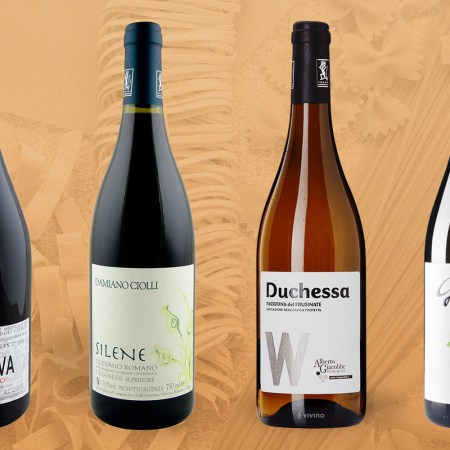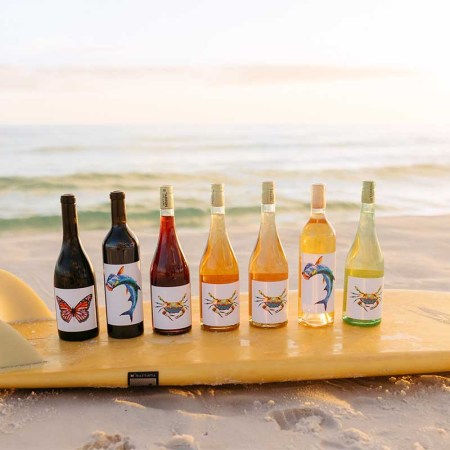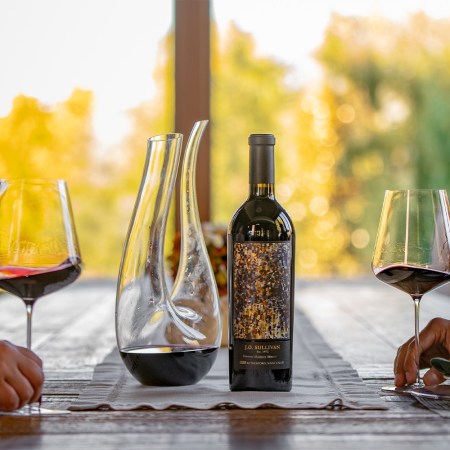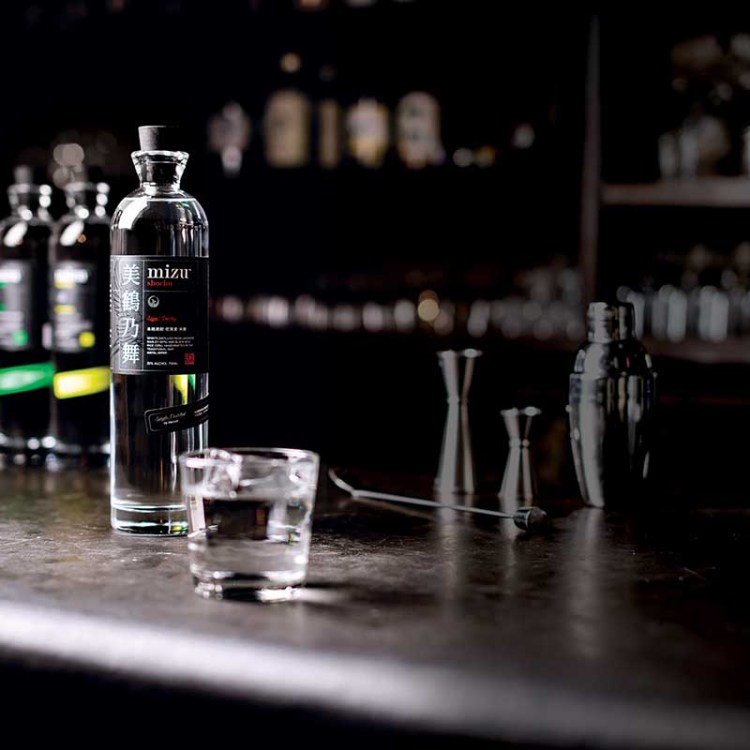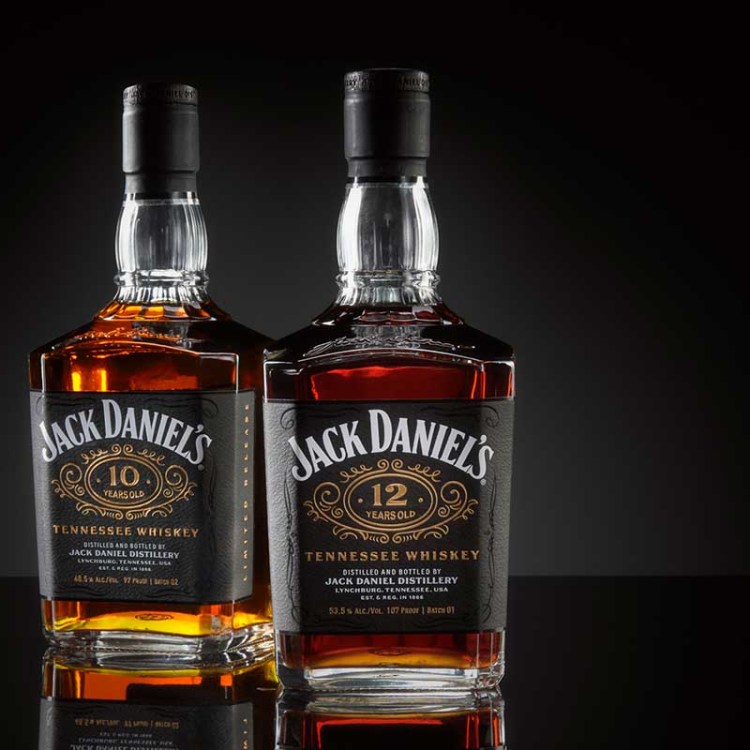If bubbles only make you think of celebrations or pre-game aperitifs, know this about Italy’s sparkling wine: Bring your appetite, because Franciacorta is for food.
Sure, there are plenty of Champers devotees who extoll the wonder of pairing that beloved high-acid bubbly with a laundry list of dishes, but when it comes to flavor-cleaving complements, it’s not just about the acid alone. “I love Champagne when I’m thirsty,” says winemaker Daniele Gentile, co-owner of Corte Fusia, a boutique, 35,000 bottles-a-year winery in the town of Coccaglio. “But you can pair Franciacorta with all food.”
It’s the secret superpower of this under-the-radar, northern Italian sparkler—a perfect balance of acidity and savoriness, but with a healthy dose of fleshy, ripe fruit, too. And with the Champagne region still limping through 2022 from a combo of last year’s cruddy, vine-stunting weather, supply-chain issues and the world’s increased thirst for sparkling wine, the requisite Champagne shortage means it’s time to look elsewhere for bubbles.
“For me, what I really like about Franciacorta is that you have more ripeness of fruit. The acidity levels are high but lower than Champagne,” says May Matta-Aliah, the U.S. educational ambassador for the wine region. “You end up with a profile that makes them more naturally balanced so you don’t need to adjust with dosage.”
Dosage is the sugary liquid added after disgorgement (which is when one gets rid of the yeast deposits leftover from the secondary bubble-making fermentation, which sparklers are aged on for a spell). It’s used to smooth out some traditional method sparkling’s high-acid sharper angles, as well as create a signature cuvée style. With Franciacorta, that needed sugar fix across the board tends to be much lower or not used at all, because it’s simply not necessary.
“People in the U.S. think Franciacorta is like Prosecco or Champagne,” says Francesca Faccoli, who makes wine alongside her father, Claudio, at the family’s namesake 50,000-bottle-a-year operation. “But there’s a huge difference. With Champagne, the acidity is amazing, but here, it’s a little warmer. We have great acidity with fruitiness. Franciacorta is round and more complete.”
In general, the brut level (which is what your basic, dry, non-vintage Franciacorta will be) tends to be quite a bit lower in sugar than other sparkling-wine regions — within the less than 6 grams per liter range, a number that would technically put most sparkling wines in the extra brut category; that is to say, cracker dry. And some, like Corte Fusia, don’t use any dosage at all. “To me, Franciacorta wines tend to be more vinous. I feel a lot of the time when drinking sparkling wine, the texture of the bubbles overwhelms the flavor,” says Matta-Aliah. “With Franciacorta, you notice the wine more holistically on your palate. It’s a sparkling wine that drinks like a still wine.”
“I love Champagne when I’m thirsty. But you can pair Franciacorta with all food.”
Winemaker Daniele Gentile, co-owner of Corte Fusia
Nestled in the alpine foothills in the province of Lombardy, Franciacorta (fran-chuh-court-uh) is about 50 miles east of Milan and covers around 60,000 acres — just a bit larger than the borough of Brooklyn. And while wine has been made in the area since the 8th century, it wasn’t until 1955 when a think-big enologist by the name of Franco Ziliani had the temerity to suggest that Franciacorta’s climate and growing conditions would be a good bet for making the traditional method sparkling, a la Champagne. He and winemaker Guido Berlucchi teamed up and, by 1961, had their first successful vintage. It was so successful that the Franciacorta region became a DOC (a designation of origin) a few years later in 1967. By 1995, they earned the more coveted DOCG status.

Today, the main grape grown and typically found in most cuvées is Chardonnay, with Pinot Noir and Pinot Bianco making up the rest. And lately, there’s been growing interest in restoring plantings of an old, late-ripening, climate-change friendly variety, Erbamot, for all the indigenous grape geeks out there. All of that gets broken down into five distinct but linked categories: Non-vintage, typically brut-style Franciacorta; Rosé, which must be a minimum of 35% Pinot Noir; Satèn (the name clues you into its tell-tale silky texture), which is a Blanc de Blancs-style more often than not made of 100% Chardonnay; and the vintage-centric Millesimato and Riserva. Each must spend 18 to 60 months aging on the lees, depending on the style and rules it must adhere to, adding extra layers of plush, rich texture and complexity. And while quite a few producers will ferment (not age) a small percentage of Chardonnay in oak, the wines by and large are not at all oaky in nature.
The region also has a heartening collective focus on organic farming and sustainability, with close to 70% of the vineyards here certified organic, which seems to be more about intuitive vine management than trendiness. “Producers are becoming more confident in their fruit,” says Silvano Brescianini, Consorzio Pranciacorta president and general manager of Barone Pizzini, the first winery in the region to become certified organic over 20 years ago and one of the producers embracing the Erbamat grape variety. “There’s a clarity in our wines; we don’t need to mask them. At the end of the day, that’s our work.”
Pick up any of these buonissimo bottles to pop at a dinner table near you:

Bellavista Satèn 2016
Although this vintage clocks in at Bellavista’s highest dosage level, it’s still a low 5 grams and change per liter, making it more of an Extra Brut-style sipper. It also uses an unusually high amount of oak-fermented Chardonnay (about 50% of the cuvée), but winemaker Luca Rossi’s decisions here make magic in your mouth. Round and rich but focused, it offers gorgeous notes of saffron, nougat, yellow apple, and star fruit with a texturally waxy richness that’s thoroughly beguiling.

Mirabella “Edea” Blanc de Blancs Brut
Not only are Mirabella’s 124 acres seven years into being certified organic, but they also ferment all their base wines in concrete vats, which actually saves about 30% in energy use, according to winemaker Alessandro Schiavi. Their flagship cuvée is a blend of 80% Chardonnay and 20% Pinot Bianco, and has pretty aromas of apple blossoms and lemon that morph into honeysuckle and sweet-tart green apple on the palate, with a long, snappy-tart, minerally finish.

Faccoli Franciacorta Brut NV
Although it’s non-vintage, the fruit from this current release comes from 2018, says winemaker Francesca Faccoli. It has a healthy 20% dose each of Pinot Nero and Pinot Bianco (likely the source of the lovely, unshy notes of tree blossom, lemon verbena and tarragon on the nose) with Chardonnay making up the rest with juicy, fresh-pear fruitiness. It sits for two full years on the lees (six months longer than required by the DOCG), and you feel it in the soft, round mouthfeel here.

Barone Pizzini “Animate” Extra Brut NV
Its back-straightening acidity and herbaceous, grassy, citrusy nose may well come from the 3% bump of Erbamat in the mix here, and the ultra-low dosage (less than 1 gram per liter) nicely complements the purposefully zippy style of this wine. When you sip it, there’s unexpected but welcome juiciness that fills your mouth, with flavors of just-ripe pear and lemon zest and a full, plush texture.

Corte Fusia Franciacorta Brut
Buddies Daniele Gentile and Gigi Nembrini make their wines from about 17 acres divided into three vineyards around the foothills of Monte Orfano. Intensely aromatic, this zero-dosage sparkler smells of wild meadow flowers and juicy pear flesh, which travels onto the palate with a juicy touch of bright, fresh citrus. Even though it’s non-vintage, Gentile and Nembrini can always tell you what year the stainless-steel fermented fruit came from—in this case, 70% Chardonnay, 20% Pinot Nero, and 10% Pinot Bianco from 2019.

Castello Bonomi Rosé Millesimato 2017
This cool vintage had talented winemaker Alessandro Peletti letting his fruit sit a week later than he usually would, but his patience paid off. This glorious vintage rosé has a bright but deep rosy hue from sitting overnight on the skins of this 100% Pinot Nero Franciacorta, and layers and layers of flavor. It smells of fresh summer strawberries, fruit tree blossom, tarragon and ripe pear, and it fills your mouth with round, plush texture and flavors of clementine and strawberry juice…but with a little bit of a satisfying salty undertone that makes you seek out meaty, fatty fish or plate of cured meat and stinky cheese.
This article was featured in the InsideHook newsletter. Sign up now.

